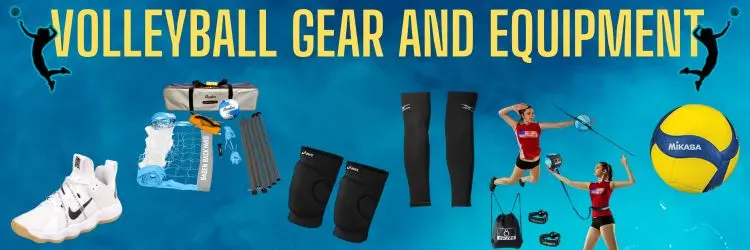Volleyball Penalties and Fouls

Volleyball Penalties and Fouls: Understanding the Rules and Consequences
Volleyball is a fast paced and exciting sport, but like any competitive game, it has a set of rules to ensure fair play. Players, coaches and fans alike must understand the common penalties and fouls in volleyball. This article will explore the types of violations, their consequences and how they impact the game.
Common Volleyball Fouls
Net Touch Violation
- A player is not allowed to touch the net during play.
- Touching the net while attempting to block, spike, or save the ball results in a point for the opposing team.
- This rule prevents unfair advantages and ensures clean play at the net.
Foot Fault
- Players must serve from behind the end line.
- Stepping on or over the boundary line during a serve is a foot fault, leading to a point for the opponent.
- Consistent practice in serving technique can reduce foot fault errors.
Double Hit
- A player may not hit the ball twice in succession.
- This often occurs when the ball accidentally makes contact with a player’s body twice or when poor technique is used during a pass or set.
- Proper passing and setting drills help minimize double hits.
Carrying or Lifting
- Lifting, carrying, or catching the ball instead of striking it cleanly is illegal.
- This is often called when a setter mishandles the ball.
- Practicing clean hand contact and ball control is essential to avoid this foul.
Illegal Back Row Attack
- Back row players cannot attack the ball above the net if they jump in front of the attack line.
- Violating this rule results in a point for the opponent.
- Proper positioning and court awareness can prevent back row attack violations.
Rotation Violation
- Volleyball teams follow a specific rotation order.
- Incorrect rotation or failure to follow the serving order results in a point and service for the opposing team.
- Players must be mindful of rotation cues and stay alert during the game.
Substitution and Lineup Violations
- Teams are permitted a limited number of substitutions per set.
- Illegal substitutions or improper lineup positioning result in a penalty.
- The referee may award a point to the opposing team.
- Coaches and players should maintain accurate rotation sheets and communicate substitutions effectively.
Conduct and Sportsmanship Penalties
Unsportsmanlike Conduct
- Verbal abuse, aggressive behavior, or arguing with referees can lead to penalties.
- Warnings, loss of points, or even disqualification may follow.
- Promoting positive sportsmanship fosters a respectful and fair competition.
Delay of Game
- Prolonged interruptions, intentional stalling, or failure to resume play within the allotted time can result in a delay of game penalty.
- The referee may issue a yellow or red card depending on the severity.
- Teams should be prepared and follow time regulations to avoid unnecessary delays.
Improper Request
- Players or coaches making unauthorized substitution requests or unnecessary appeals may receive a warning.
- Understanding the proper procedure for timeouts and appeals can prevent these penalties.
Consequences of Volleyball Penalties
Volleyball penalties generally have clear and immediate consequences:
- Point Awarded: Most minor fouls result in the opposing team receiving a point.
- Loss of Service: A serving team committing a fault loses its serve to the opponent.
- Yellow Card: A formal warning for unsportsmanlike behavior.
- Red Card: Results in the loss of a point and can lead to disqualification.
- Expulsion: Severe misconduct may lead to the player or coach being removed from the match.
Additionally, in official competitions, accumulation of conduct violations can result in suspension from future games, impacting both individual and team performance.
How to Avoid Volleyball Penalties
- Know the Rules: Players and coaches should stay familiar with the official rules of volleyball.
- Practice Good Sportsmanship: Maintaining a respectful attitude towards officials and opponents can prevent conduct-related penalties.
- Develop Strong Fundamentals: Practicing proper techniques reduces the chances of committing handling and net violations.
- Stay Aware: Players should communicate and monitor their position on the court to prevent rotation errors.
- Attend Regular Training: Teams should regularly participate in training sessions focusing on gameplay scenarios to improve rule adherence.
The Role of Referees and Officials
Referees play a crucial role in maintaining order during volleyball matches. Their responsibilities include:
- Enforcing the rules and ensuring fair play.
- Making judgment calls on close plays.
- Issuing warnings, penalties and cards when necessary.
- Communicating decisions clearly to players, coaches and spectators.
Teams can challenge certain referee decisions through video review systems in higher level competitions. This ensures accuracy and fairness in critical moments.
Learning from Penalties
Every penalty or foul presents a learning opportunity for players. Coaches can use video analysis to review violations and provide constructive feedback. Regular practice and game simulations also help players understand how to avoid common mistakes.
Teams that minimize penalties often gain a competitive advantage, maintaining momentum and increasing their chances of victory.
Conclusion
Understanding volleyball penalties and fouls enhances the enjoyment and competitiveness of the game. By following the rules and maintaining sportsmanship, players contribute to a fair and exciting match. Whether you’re a beginner or a seasoned player, knowledge of these regulations will help you play and appreciate volleyball to its fullest.
With dedication to clean and fair gameplay, volleyball remains one of the most thrilling and dynamic sports enjoyed by millions around the world.


